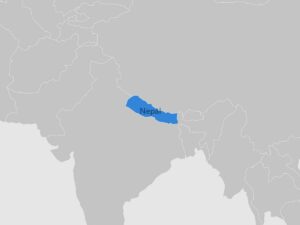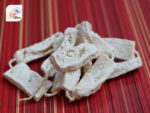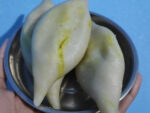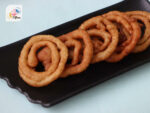Nepalese Food Dishes: Basic Overview
Common Ingredients
Common Cooking Methods
Courses
Meals
Key Taste
Eating Etiquette
Meal Presentation
Culinary Festivals
Influence and Fusion
Popular Types of Nepalese Dishes
-
Charcuterie and Cheese Boards
These are traditional dried meats, cured meats, and cheeses in Nepal.
These items are known for their strong, distinct flavors and are often consumed as snacks or part of a larger meal.
-
Dumplings
Dumplings are a beloved aspect of Nepalese cuisine, with Momo being the most famous.
These steamed or fried dumplings are filled with various ingredients, including meats, vegetables, or cheese.
Some often come with a dipping sauce.
-
Fermented Dishes
Fermenting is a common way to preserve ingredients in the country.
These dishes are not only flavorful but also have a longer shelf life, which is particularly useful in regions with harsh climates.
-
Grilled and Barbecued Dishes
Grilling and barbecuing are popular cooking methods in Nepal, especially for meat.
The meat is normally marinated before being grilled over a wood fire.
-
Snacks
These snacks are often enjoyed with tea or as a quick bite.
They can be roasted, fried, or baked.
Some are ideal for vegan/vegetarian diets.
Nepalese dishes are characterized by their diverse flavors, heavily influenced by flavorful Indian delicacies and Tibetan culinary gems, with indirect elements from Chinese treats due to the Tibetan connection.
Plus, ethnic diversity is one of the features that makes their foods more diverse.
Newari cuisine is a notable part of Nepalese food culture. Originating from the Newars of Kathmandu, this cuisine is indeed known for its wide variety, and the fertile soil of the Kathmandu Valley does contribute to the diversity of ingredients used.
This cuisine offers many delights prepared for specific occasions and has symbolic significance.
When venturing into Nepalese delicacies, I’ll provide you with exciting information about the origin, ingredients, texture, and cooking methods.
There are other interesting facts about traditional food, its global acclaim, and its healthy factors. Then, I suggest discovering more about the fascinating features that make them special and their differences from Indian delights. Continue to read and learn something new!
21 Popular Nepalese Dishes with Filters
As you delve into the culinary world of Nepal, you’ll discover 21 iconic dishes in this country. With filters for ingredients, taste, cooking methods, dish types, etc., your reading experience here is much better.
Plus, I’ll explore six categories: most popular, traditional, national, street food, exotic, and fusion delights of this cuisine.
Dal bhat and Thukpa are often considered Nepal’s national dish. They are staples in locals’ diets, highlighting the importance of rice, noodles, lentils, and veggies here.
Nepalese street food offers flavor-packed snacks that are readily available in markets and alleyways. Samosas are a great example.
Fusion cuisine in Nepal is a relatively new concept, where traditional Nepalese flavors mix with international influences.
Dhikri
Dhikri is a steamed rice cake beloved in the western Tharu cuisine of Nepal. These rice-based dhikri are usually elongated or have other shapes depending on the makers’ creativity.
Dhikri is made of 100% rice powder, possessing a relatively bland profile. It is recommended to enjoy dhikri with savory dishes like spicy chutney (a tasty ingredient in many Indian starters), curry, or lentil soup.
Tharu indigenous enjoy serving this dhikri on Maghe festival (the first day of Nepalese traditional Magh’s month).
Bagiya
Bagiya is a traditional steamed dumpling popularized by its outer layer of rice flour and an inner filling of sweet elements like chaku, vegetables, and other fried ingredients.
This dumpling variety is deeply rooted in the cultural and culinary heritage of the Maithil, Tharu, and Dhimal communities of India and Nepal.
In Tharu society, bagiya holds significant importance, appearing during the festival of Diwali, especially on the day of Laxmi Puja. Thanks to that, bagiya adds a special feature to the overall Nepalese food scene.
Masaura
Masaura (or masyaura) is a traditional Nepalese food item made from fermented, sun-dried vegetable balls.
These balls are a blend of various or single minced vegetables combined with black lentils, with popular choices being taro, yam, and colocasia leaf.
Masaura emerged as a nutritious alternative during times when fresh vegetables were scarce. It is fried in oil and turned into a curry for pairing with rice or bread.
Chhurpi
Chhurpi (aka yak cheese, durkha, and chogo) is a hard cheese variation from the Thakali of Nepal.
Chhurpi is made from pressed yak buttermilk to produce the hard variety. This hard cheese is regarded as the hardest and toughest product in the world.
For consumption, the local population keeps the cheese in their mouth to let the moisture soften it before chewing. There’s also a soft version of chhurpi made by hanging the whey liquid in a cloth until the cheese has a soft, white, and neutral flavor.
Furthermore, the Chhurpi from the Himalayan is much creamier and softer than the other regions. Chhurpi is a component in the savory dishes of Nepalese, especially when paired with green vegetables.
Dhau
Dhau is a type of Nepalese yogurt crafted by the Newar community. Traditionally made in clay pots, this popular yogurt-based treat boasts a rich flavor and a dense consistency.
Typically, it’s prepared during the major festivals of Dashain and Tihar in Nepal and Newar celebrations. Consequently, dhau is essential to ceremonies, local festivities, marital rites, religious events, and familial gatherings.
It’s also an offering to the god during ritualistic bathing ceremonies. A notable variant is “Juju dhau,” originating from the Bhaktapur district. Made from buffalo’s milk, this version of dhau is richer than cow’s milk.
Jerry
Jerry is a famous Nepalese fried sweet, known by many monikers, jalebi, jilphi, or jeri. The sweet pastries come in a pretzel-shape or yellow-orange loop-like. Locals will dip jerry into a special saffron syrup after deep-frying.
Jerry is best consumed fresh after frying from the pan for a crispier texture. The sellers even suggest having jerry with swaari, a special soft bread of Nepalese cuisine.
Sukuti
Sukuti is a dried meat product of Nepalese origin, widely consumed in the Himalayan regions of India and Tibet. Traditionally made from buffalo, lamb, or goat meat, it’s a staple dish for the Limbu and Gurung communities.
In mountain areas, sukuti provide a vital source of protein and dietary variety during the harsh winter seasons. Plus, sukuti is adaptable to various cooking methods, including deep frying, grilling, roasting, or cooking in the gravy.
Before drying, the meat is coated with spices and, when served, is accompanied by chopped onions, tomatoes, green onions, or coriander leaves.
Interestingly, the practice of making sukuti is rooted in the ritual of animal sacrifice at Hindu temples, where the blood is offered to the deities, and the meat is transformed into dried strips.
Baji
Baji (chiura) is a type of flattened rice from Nepal served as a snack or side dish. The name ”baji ” is popularly used in Newar culture (in Kathmandu Valley), while in the other territories, people call it “Chiura”.
There are two main variations of baji, including white (tuyu baji) and red (hyangu baji). These two slightly differ in texture, with the white Baji being soft while the red variety is crispier.
Aside from being eaten alone or paired with yogurt and tea, it’s great with several other savory and hearty treats.
The Nepalese locals prepare baji on special occasions like weddings, other ceremonies, and feasts, especially the Newari feast. Field workers also love this flattened rice since they enjoy the flattened rice as a light snack after work.
Samay Baji
Samay baji is an authentic treat of the Newari cuisine, a traditional sacred dish in Nepal. Nowadays, this Nepalese platter is gradually becoming more prevalent around the world.
Samay baji is especially consumed in Newari Festivals, family gatherings, or auspicious occasions (Tihar, Indra Jatra, Dashain, and so on). On a normal day, the local restaurants also serve samay baji since it is pretty easy to prepare.
A traditional platter of samay baji includes chataamari (a Nepalese rice crepe), beaten rice (baji), chhwela, and some condiments like thinly sliced ginger, spices mixed with boiled beans, or other things.
Yomari
Yomari is a well-known dumpling on the streets of Nepal from Newari cuisine. The treat usually has a glutinous rice shell (triangular, teardrop, or fish-shaped) filled with sesame seeds, coconut, sweet molasses, or sometimes lentils and meat.
The Newari have yomari on the last day of Yomari Punhi to celebrate the success of the rice harvest.
It even has its own festival called Yomari Punhi (usually held on the second day of the full moon in December each year). The festival is believed to originate from today’s Panauti area or the former Panchal Nagar.
Dal Bhat
- National
- Traditional
Dal bhat is a national dish in Nepal. A standard dal bhat meal comprises steamed rice with a lentil or pulses stew known as dal.
In Nepal’s higher elevations, the rice in dal bhat is substituted with grains like maize, buckwheat, barley, or millet and occasionally complemented with roti, an unleavened bread.
The dal is seasoned with various ingredients, including onion, garlic, ginger, chili, tomatoes, and tamarind, and is always enriched with herbs and spices such as garam masala, cumin, coriander, and turmeric.
Often, dal bhat is accompanied by vegetable tarkari, a mix of seasonal vegetables, and occasionally paired with pickle (achaar) or fried fish (machh bhaja).
Thukpa
- National
- Street Food
- Traditional
Thukpa in Nepal features hearty, hand-pulled wheat noodles, which are a central component of the dish.
It’s a specialty of Sherpa people in Nepal, and this noodle dish is also a beloved delicacy in Kashmiri food culture.
Nepalese thukpa utilizes the long strands in a rich and aromatic broth. Plus, the intense spiciness from the Nepalese thukpa variation is one of the main highlights.
Locals favor the more vegetarian-friendly creation of thukpa with kidney beans, gram, tofu, paneer, chickpeas, while the meaty option of yak, goat, lamb, or chicken, is more famous in Tibet.
Momo
- Traditional
Momo is a popular type of steamed dumpling in Nepal, originating from Tibet, and was brought to Nepal by the Newar merchants.
These dumplings are quite similar to Chinese variations, with fillings generally containing vegetables, tofu, and meat.
Nowadays, the ingredients for momo’s filling mixture have developed, introducing ingredients like cheese or mashed potatoes into the mix for more flavors.
They will also fry momo or serve it “half steamed, half fried”. In a meal, these filled dumplings are served with fermented vegetables and tomato-based sauces.
Samosa
- Traditional
Samosa is a famous snack in Nepal, coming from India. Samosa is made of various ingredients and condiments like hot spices and herbs.
All the ingredients are wrapped in a triangular white flour wrapper. Then, the casing is fried to make it crunchy and easily crumble on your finger.
The Nepalese-style samosa is usually vegetarian, and ingredients such as minced meat are omitted. Samosa is a well-loved street food here. Moreover, the samosas in the eastern part of this country go by the name “singadas.”
These fried triangular delights are served with a delicious red chutney, and they’re usually enjoyed fresh out of the pan.
Dhido
- Street Food
- Traditional
Dhido (or dhindho) is an exotic Nepalese delicacy popular in many dishes. It is also considered a staple or national food of Nepal, especially in the hilly and mountainous regions of this country.
Dhido requires basic components like millet (with water and salt), cornmeal, or buckwheat flour to pair with pickled or fermented leafy veggies. These ingredients are milled by hand and using stone as a tool.
When cooking, people work the mixture with a dabilo (iron spatula) and phalame tapke (iron pan) to create a smooth, paste-like consistency.
The best pairings for dhindo are vegetable curries (lentil stew or soup), meat soup, yogurt, buttermilk, butter, or pickles for both lunch and dinner. Alternatively, people take small balls of dhido with their fingers to dip them in a liquid before consuming.
Gundruk
- Street Food
- Traditional
Gundruk is a fermented leafy green vegetable originating from Nepal and is also cherished in other Himalayan regions. It is produced through the fermentation of leafy vegetables (saag), including mustard, radish, and cauliflower leaves.
As a side dish or an appetizer, gundruk adds a unique flavor to meals and acts as a crucial source of minerals, particularly during the off-season when fresh vegetables are scarce.
To make Gundruk, Nepalese harvest leafy greens for cleaning, drying in the hot sun in a well-ventilated place, and then processing for sour fermentation within 1 week. In Nepal, the country produces around 2000 tons of gundruk annually.
Sel Roti
- Fusion
- Street Food
- Traditional
Sel roti is a ring-shaped treat of Nepal made from rice flour, offering a sweet, crispy crust and soft, puffy dough after deep-frying. These treats are a solid choice at weddings and parties.
Sel roti is also a major Nepalese festive food, especially Dashain and Tihar festivals. Alternatively, sel roti is widely available at street vendors as a famous roadside snack.
Chataamari
- Street Food
- Traditional
Chataamari is a Nepalese rice crepe popularly served in the Newa (or Newar) cuisine of the Kathmandu Valley.
Made from rice flour, sometimes mixed with lentil paste, Chatānmari is thinly spread on a flat pan, topped with ingredients like meat, eggs, cheese, vegetables, or sugar, and cooked covered.
While traditionally savored during festivals and special occasions, chatānmari has also become a favored snack and appetizer across different cultures.
Aloo Tama
- Street Food
- Traditional
Aloo tama is a Nepalese curry combining Indian and Chinese cuisines. Also known as aloo bodi tama, fermented bamboo shoot (called “tama”) is the main component.
Also, natives add potatoes and black eye beans to the mix with the fermented bamboo shoots, making it an ideal food for vegetarians. The overall taste of Aalu Tama is sour and spicy.
To enjoy the bamboo shoot soup, people serve the soup with some sel roti, rice, or as a part of the famous samay baji (small dishes of Nepal).
Choila
- Fusion
- Street Food
Choila, chhwela, or chhoyela is a Nepalese creation of the traditional Newari cuisine featuring spiced grilled buffalo meat (or lamb, chicken, mutton, duck, mushroom).
To boost the spiciness of the food, the Newari uses a variety of spices such as chilis, fenugreek seeds, and some turmeric for a better coloring effect.
When eating, Nepalese love pairing choila with baji. Otherwise, this choila is a part of the famous samay baji. Note that typical choila is very spicy for newcomers.
Sekuwa
- Street Food
Sekuwa is a roasted meat specialty of Nepalese cuisine, made with various meat parts, such as chicken, pork, goat, or lamb meat.
People apply a wide range of condiments like natural herbs and spices to diversify the flavor profile of sekuwa.
For serving, Nepalese achaar (pickled tomatoes achaar) and baji (beaten rice) are favorite options to enjoy with sekuwa. These components will add a bland, starchy base and a sourness to the whole plate.
Although sekuwa is loved in every corner of Nepal, Dharan and Tarahara (a town in Eastern Nepal that belongs to Sunsari District of Koshi State) are seen as this country’s “sekuwa’s capitals.”
What Makes Nepalese Foods Special?
Nepalese foods are special thanks to the rooted history and culture, various regional cuisines, ingredients, and pairings. Each specialty stands out for its regional features, types, and ingredients.
What Are The Features of Nepalese Regional Foods?
In Nepal, there are 5 regional cuisines that affect the dishes, each having standout features that separate them from others.
From these cuisines, Nepal has various types of specialties in terms of many elements like ingredients or cooking methods.
To sum up, today’s suggested foods are not all of the delicious dishes that can stand for Nepalese cuisine; therefore, if you know some other luscious treats, feel free to share your experience with me.









































Jamie Scott
Editor in Chief, Senior Content Writer
Expertise
Home Cooking, Meal Planning, Recipe Development, Baking and Pastry, Food Editor, Cooking-video Maker, Western Food Evaluation Expert
Education
Le Cordon Bleu College of Culinary Arts
Local Community College, New York, NY
Jamie Scott is a skilled culinary expert and content creator specializing in Western cuisine. With over 15 years in the culinary field and formal training from Le Cordon Bleu, Paris, Jamie deeply understands how to blend nutrition with delicious flavors. His passion for cooking matches his commitment to making healthy eating accessible and enjoyable.
On Fifteen.net, Jamie brings a fresh perspective to classic dishes and beverages, offering readers insightful recipes, cooking tips, and a fresh view on meal planning that emphasizes taste, health, and simplicity.